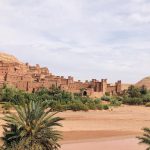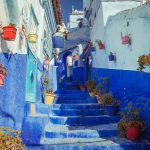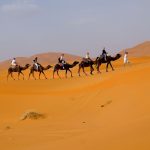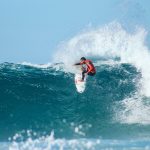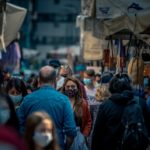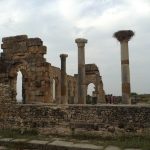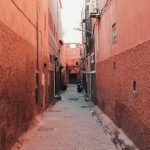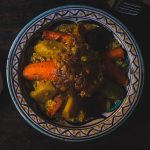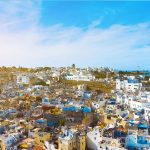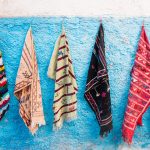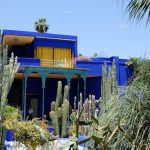A Brief History about Marrakech :
Marrakech has seen 5 dynasties come and go, each of one leaving their indelible mark on its destiny. it was founded in 1062 by the Almoravids and became the capital of their empire.
Marrakesh also went on to be captured by various other caliphates and dynasties such as the Almohad Caliphate and the Marinids who captured the city in 1269.
Over the course of Moroccan history, Marrakech has always maintained a rivalry with Fez to become the leading city in the country. The country was often fragmented in two with Marrakesh as the southern capital and Marrakesh as the northern one.
The weather in Marrakesh – The best time to come
Marrakech is an inland city in the South West of Morocco. The weather is warm all year round and the summer months often exceed 37 °C.
Apparently, The best time to visit Marrakech is in Fall and Spring. Located in the north-west part of Morocco, Marrakesh is hot and dry all year round. The average temperatures in Marrakech vary from winters to summer. The winter months can get as low as 6°C, The days are absolutely comfortably warm and the nights are chilly. So, in case you wish to visit the spectacular Djemaa El-Fna after dark, you will need layers of clothing.
while the summer months can be as hot as 45°C, so in case you do not have a problem with the extreme heat while traveling or exploring a place, then summers in Marrakech might be a good time for you to visit. The summer months of June-August are prickly hot and not comfortable for roaming around the city during day time. Also, visiting the souks isn’t a good idea as the heat will make you exhausted within no time. However, if you still have to visit Marrakech during summers, Medina is in full swing again when the sun has set and the day is a bit cooler.
Getting around Marrakech
Marrakech has various means of transport, although the only the way you can visit the medina, is by foot, Marrakech is discovered above all on foot, it is the main mode of locomotion between the major centers of attraction of the city.
Local buses: The ALSA bus in the city is well developed (urban/electric) But we do not always recommend ALSA bus as a first option, they are very old and are usually packed with people, so most likely you’ll prefer to take a taxi or go on foot.
Tourist Bus: For a visit to Marrakech, red buses of the public company ALSA are also a good way to discover the ocher city, through its different neighborhoods, from the medina to the centers of the attraction of the city.
Taxis: Two kinds of taxis exist in Marrakech: small ones called “petit taxis” are allowed to take 3 people
and the big taxi called “grand taxi-up to 5. The smaller taxis are used in the city center. The larger ones are for far-away excursions.
All taxis in Marrakech have taximeters, Before getting in, ask the driver to switch it on. If he refuses, then try another driver. Sometimes they will tell you a fixed price. Normally driving around the center costs around 20-50 Dirham. You shouldn’t pay more. If they ask for more than 50, look for another ride.
The Caleches of Marrakech: The word “Caleche” may not be familiar to you, if you’ve never spent a week or two in Morocco before. A caleche is a type of horse-drawn carriage-.
The Caleches of Marrakech are light carriages with small wheels at the front, and two larger wheels at the rear, with inside seats for four to six passengers. The carriages are usually drawn by two medium-large horses of equal height. They are everywhere in Marrakech. You can arrange a half-day trip around the city walls, which costs only 300-400 Dirham.
Safety in Marrakech
Is Marrakech safe?
Yes! Marrakech is a relatively safe city. There are no violent crimes in this city, and in many assessments released by governments around the world Morocco is regularly labeled “safer” than European countries such as Spain or France. But here’s my general assessment. There’s nowhere in this world that is “safe”. Bad things can happen everywhere
But the best solution to avoid being pick-pocketed is to stay aware of your belongings and surroundings at all times. You should leave all your important items at your hotel and walk around only with what you absolutely need.
we suggest always keeping your wallet in your front pocket or carry a money belt. Another great option is to travel with a slash-resistant and lockable anti-theft bag.
what to eat and what to avoid in Marrakech
Moroccan cuisine is considered one of the richest in the world, known for its profusion of flavors and colors, the result of multiple cultural heritages (Berber, Arab, Jewish, Andalusian). This cuisine is characterized by the mixture of sweet/salty and the contributions of many spices, again present both in savory dishes as desserts. Moroccan cuisine is a reflection of its history and successive peoples who settled there.
As well as the many variations on tagine and couscous, here are a few local specialties and snacks to keep an eye out for whilst wandering the Medina:
B’stilla: The classic Moroccan dish is traditionally made with pigeon or chicken meat encased in thin flaky pastry and sweet spices, but other fillings such as seafood are available too.
Briouats: Little triangular samosa-like filled pastries, stuffed with meat or sweet almond paste.
Harira: Traditionally eaten during Ramadan to break the fast, little bowls of this hearty lentil and chickpea soup are some of the cheapest street foods you can find in Marrakech.
Khobz: The staple Moroccan bread; round, flat, often made with semolina flour and great for dipping and scooping.
Loubia: Moroccan baked beans! Traditionally a morning dish. Dip your khobz.
Mint tea: It’s almost impossible to leave Morocco without having tried ‘Berber Whisky’. Mint leaves brewed with green tea, poured from a height to induce bubbles and usually served with a stack of sugar cubes.
M’smen: flatbread-like pancakes with honey and smen (fermented butter), spices, or dipped in amlou.
Svenj: Moroccan doughnuts.
Tangia: A Marrakechy special of lamb and preserved lemon slow-cooked overnight in the furnaces that heat the hammams.
Some tips for healthy eating in Marrakech
Be careful eating at the food stalls in Djem al Fna, The food stalls in the Djemma el Fna don’t have a great reputation for hygiene, although hand washing stations have recently been installed. And always Look for the ones that have many Moroccan families eating. And If someone is hassling you to eat there, keep walking
- The better the menu in English, the less to expect from the food
- Stick to food that is freshly grilled or fried in front of you
- Check that the frying oil looks light and clean
- Seafood is risky unless you know the origin keep in mind, Marrakech is land locked so it takes some effort to get seafood here.

